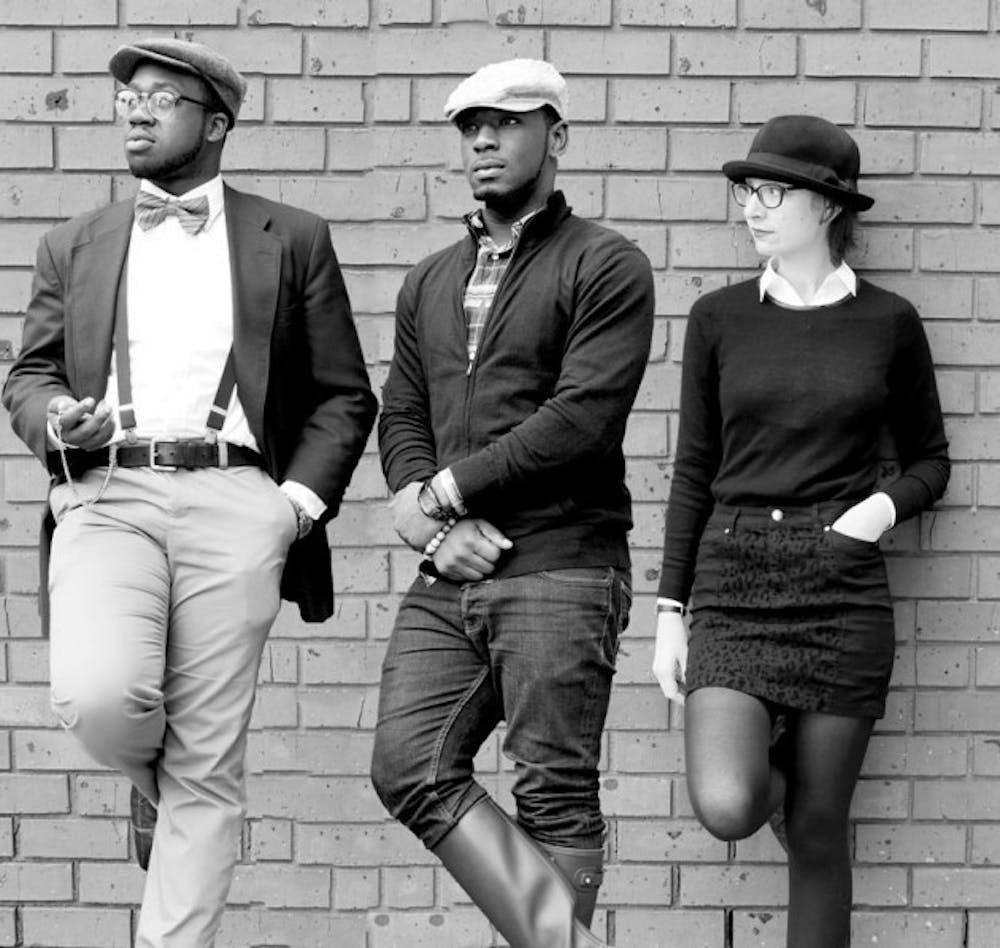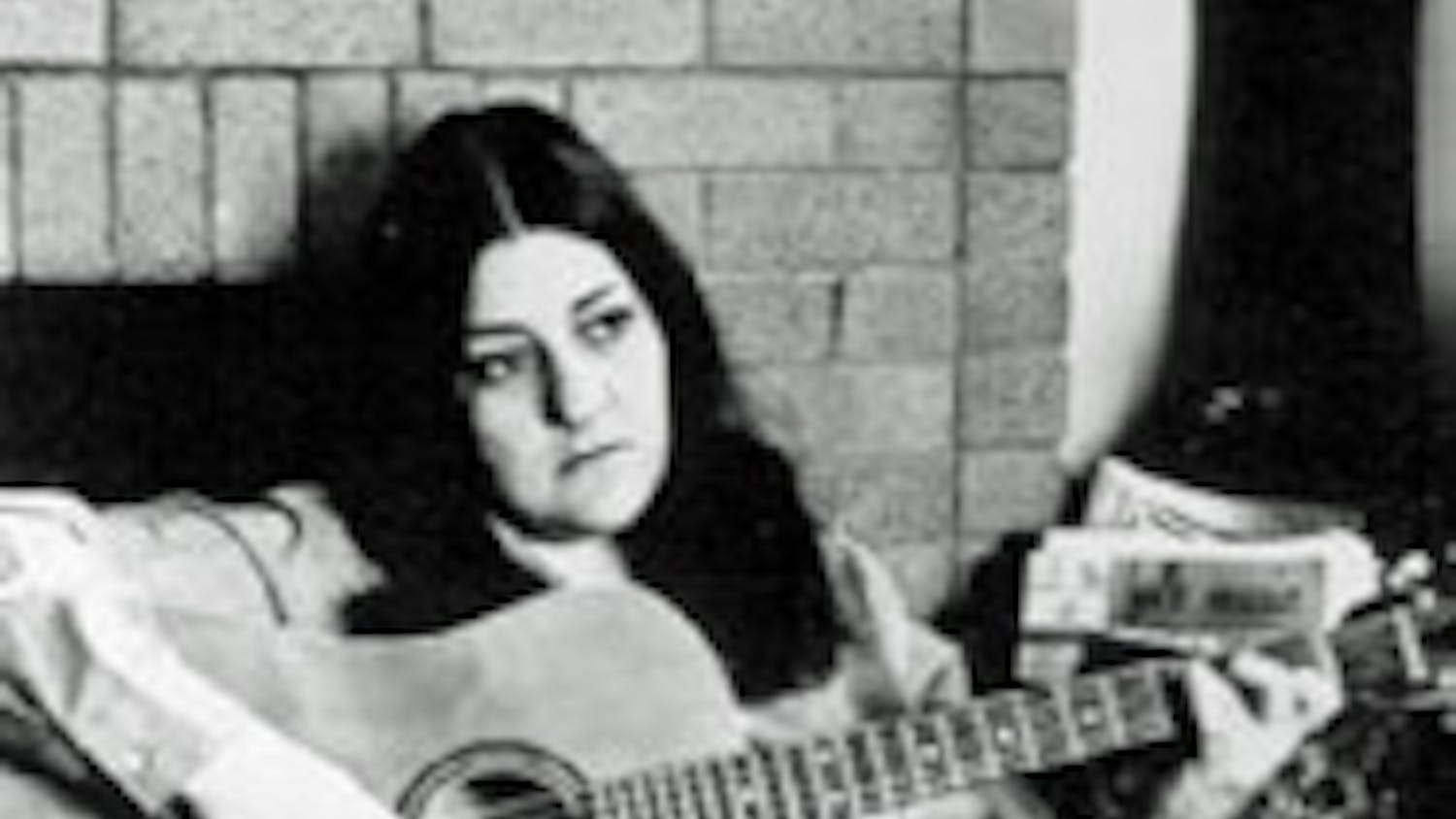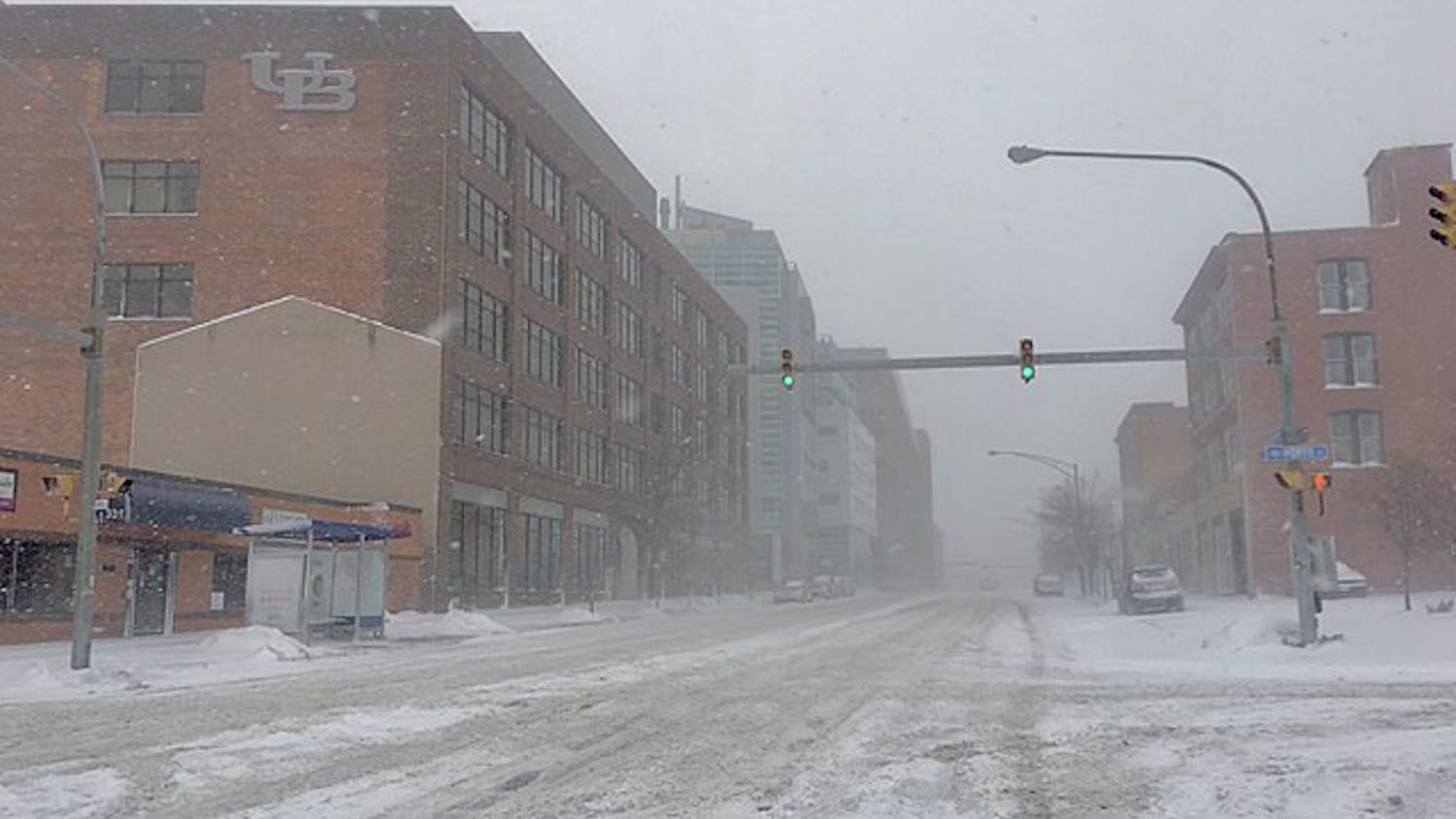
In America, we had 10 or so years of the hippy subculture. More than 50 years later, the hippy look has permeated the mainstream. Not only diehard festival goers are sporting dreads and flower headbands, but stores as commonplace as Urban Outfitters, H&M and Forever 21 are peddling their ‘flower child’ ware.
England had at least 30 years of stylish subcultures that have remained relatively under wraps in mainstream society.
For the next couple of Fridays, I’ll be introducing you to some of my favorite subcultures. This week we’ll start with the rude boy subculture of 1950-80s.
The rude boys wore “two-tone” outfits; that is, they primarily wore black and white. They were known for their two-piece suits, slicked and pompadour hair and brogues.
Today, Cletus Emokpae, a Spectrum photographer and junior communication and international business and trade major, Charles Donigbine, a junior pharmacy major, and I drew on the rude style to inspire our outfits.
I decided to play with the classic girly side of being a rudy.
I’m wearing a classic white button-up from Ann Taylor, a black Merino wool sweater from Ann Taylor, a black denim skirt from H&M, black tights and Clark’s brogues. To draw more on the rude boy look, I wore my handy black H&M bowler hat.
Emokpae has played up the classic rude style by wearing a fitted linen blazer, a striped bow tie, fitted chinos and distressed Italian leather shoes. His pageboy cap highlights a traditional English look.
Donigbinde replicates some of the more casual rude boy looks – similar to those of The Specials. He wore slim fitted jeans, an ivy hat, a plaid shirt, a black sweater and Hunter boots.
Many white working-class English boys and girls adopted the rudie style after an influx of immigration from the West Indies to Britain in the 1950s and ’60s. These kids were rebelling against the conservative society of the 1950s in a far different way from American hippies in the ’60s. Whereas hippies flew against social convention by growing their hair long and adopting free-flowing styles, rudies were outfitted in suits and pork pie hats, according to Dick Hebdige, the author of Subculture: The Meaning of Style.
The “soul brother moved on the cool lines of jazz, ska and American R&B” and combined “hats and ‘shades’ and Italian suits to produce a West Indian equivalent to the U.S. ‘soul-brother’ look; tight-fitting, loose-limbed, black and yet urbane,” Hebdige writes.
The rude style was immortalized by The Specials, an English ska band that began in the 1970s, with songs like “A Message to You Rudy” and “Rude Boys Outa Jail.”
“The working class dressed up for the weekend and the easily attainable and striking evocation of mid ’60s Jamaica was too irresistible for those who found punks sartorial alienation just that bit too alienating,” according to The Specials’ website.
Whereas rude boys stuck with suits, rude girls floated between an iconic “SKA” cartoon and an androgynous look. In the cartoon, the girl wears a tight a black or white mini-skirt, black tights, black heels and a black or white sweater. As she danced with her cartoon dance partner, other girls followed the lead of Pauline Black of The Specials and dressed like the boys. They wore black trousers and jeans, white button-ups and chunky black brogues and boots – always sticking to the two-tone color scheme.
Whether you play around with the dressy side of the rude boy or keep it casual like Donigbinde, simply by mixing together black and white – and maybe skanking (that’s a dance move) around your living room before school – you can reference one of the coolest subcultures to emerge out of England’s long history of revolutionary style movements.
email: emma.janicki@ubspectrum.com





